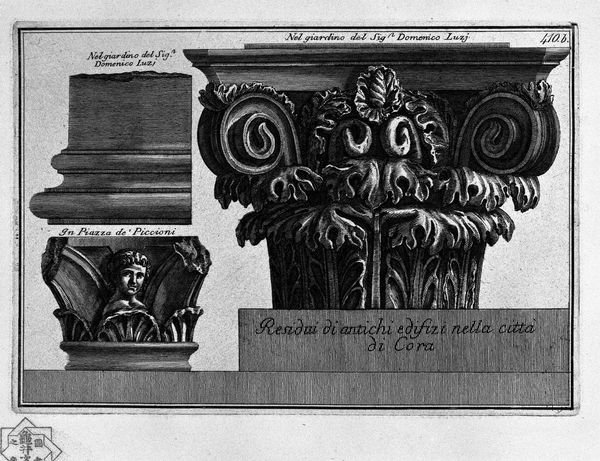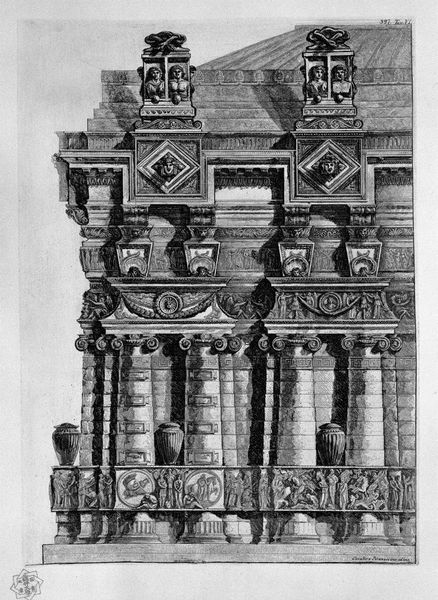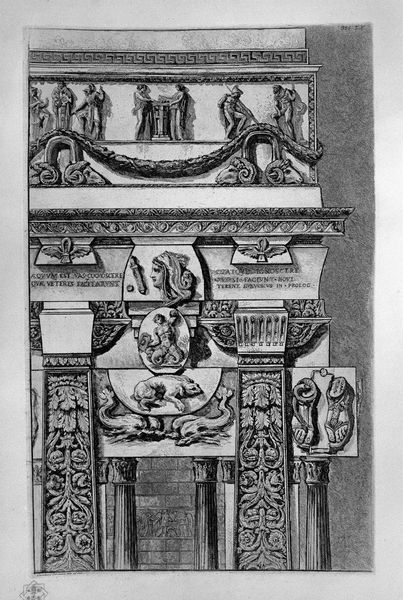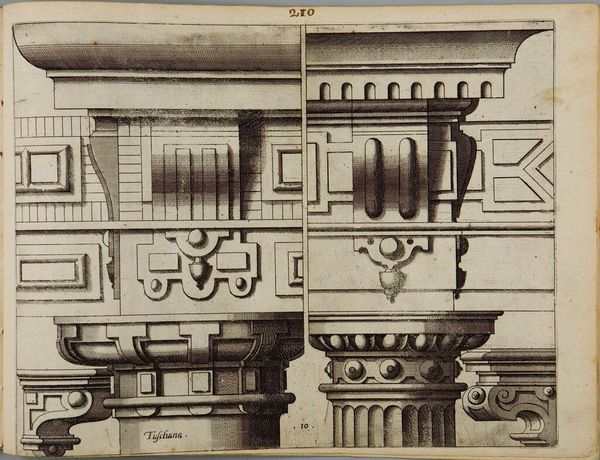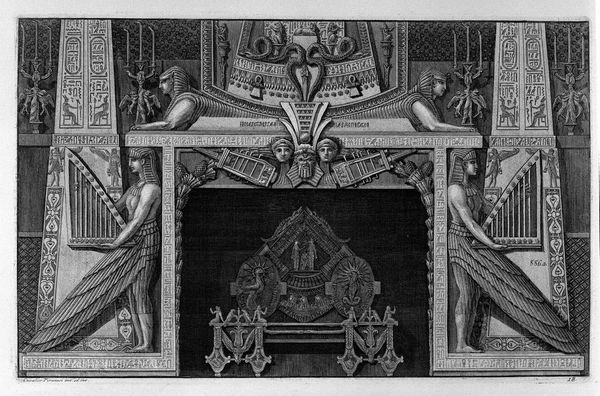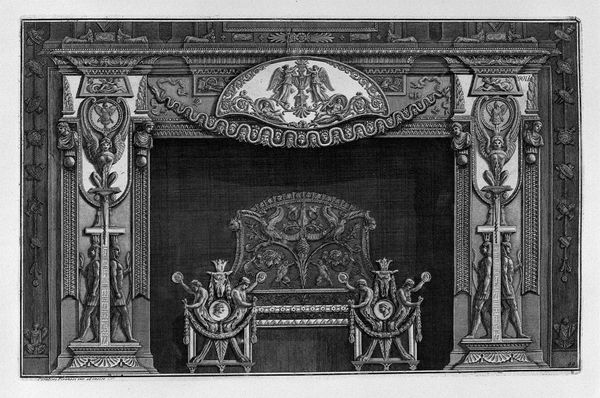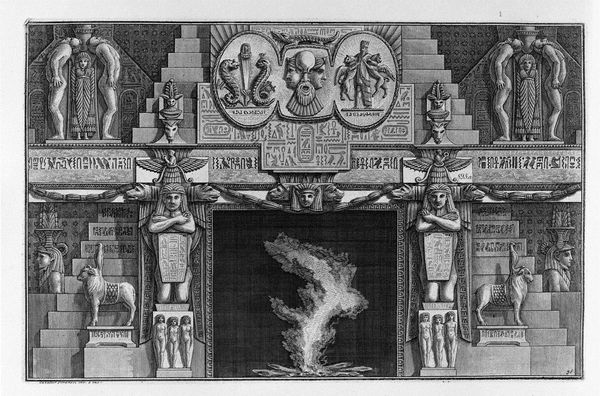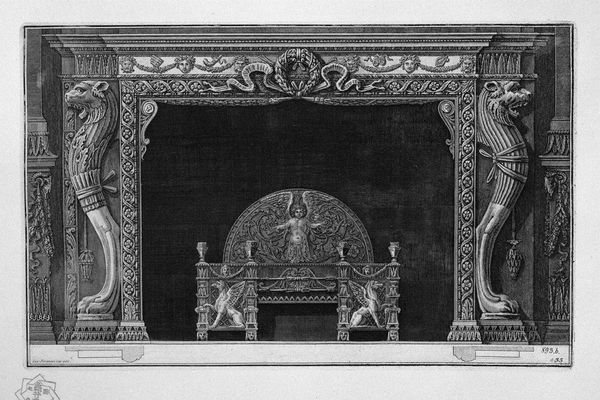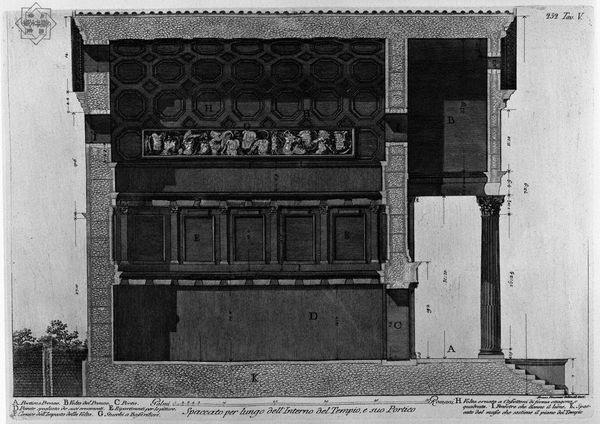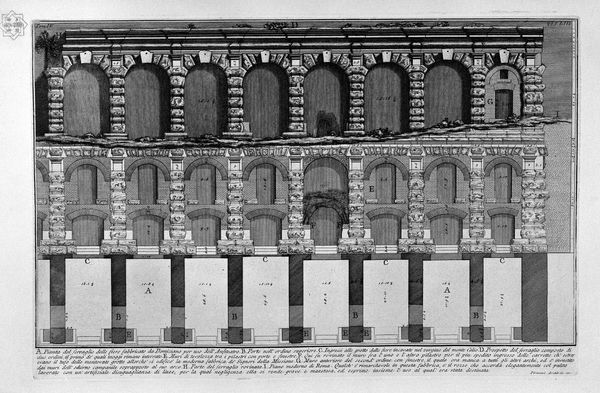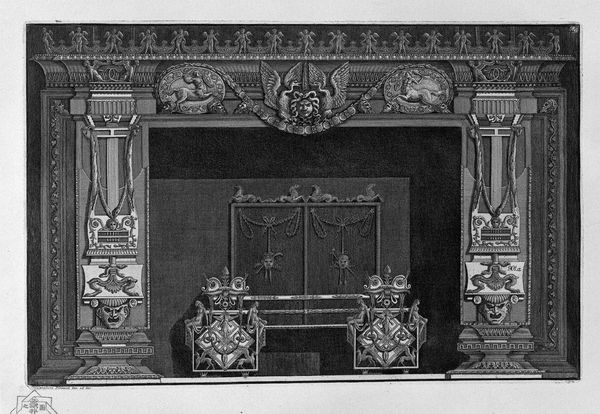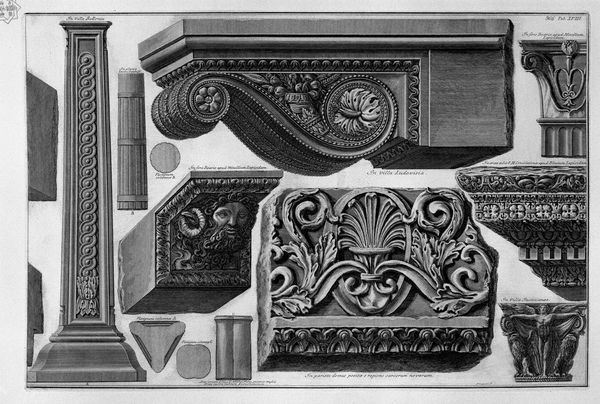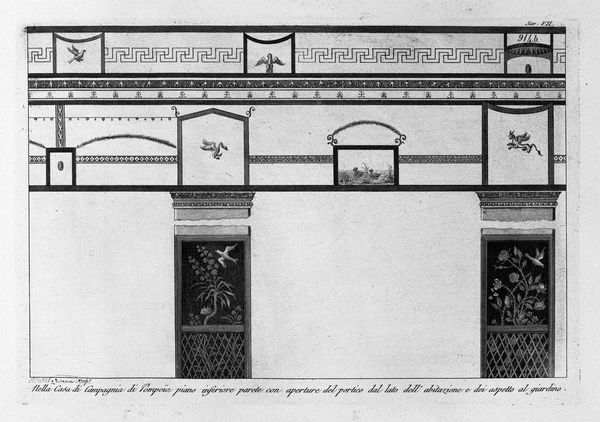
drawing, etching, paper, pencil, engraving, architecture
#
drawing
#
neoclacissism
#
etching
#
sculpture
#
charcoal drawing
#
paper
#
pencil drawing
#
geometric
#
pencil
#
line
#
engraving
#
architecture
Copyright: Public domain
Editor: So, this is Giovanni Battista Piranesi's "Architectural Decoration" from 1761. It's an etching, engraving, and drawing in pencil and charcoal on paper, quite the combination. I'm struck by its grand scale and intricate details. It almost feels like a stage set. What do you see in this piece? Curator: It’s more than just a stage set. Consider the sociopolitical climate of 18th-century Europe. Piranesi wasn't simply depicting architecture; he was engaging with the debates around the value and interpretation of classical antiquity. Notice how the layering and exaggerated ornamentation overwhelm the human figures near the door, and the inscription ‘Novitatem In Liam Contemptvnt’. This isn't just about aesthetic beauty. It’s a statement, critiquing contemporary society’s relationship to its history, where 'Novelty is held in contempt, within Liam.’ Editor: Interesting, so you’re suggesting that this almost obsessive detail is not just decorative, but carries a critical perspective on Neoclassicism itself? Curator: Precisely. The "accuracy" that Neoclassicism pursued can be seen as an ideological position itself, shaping what gets remembered or valued from the past. Piranesi plays with this by overwhelming us with detail, forcing us to question whose story is being told and how. Does the weight of history liberate us, or imprison us? Editor: I never considered that. The idea of history as a construction, actively shaped by the present…that's really changed how I see this piece. Curator: And how Neoclassicism may represent privilege and power structures. It’s important to remember that even the "objective" eye is situated within a complex web of power relations. Editor: That's given me so much to think about. It's amazing how much history is embedded in a single image! Curator: Indeed. It serves as a potent reminder that art is never truly divorced from the social and political contexts in which it’s created and received.
Comments
No comments
Be the first to comment and join the conversation on the ultimate creative platform.
